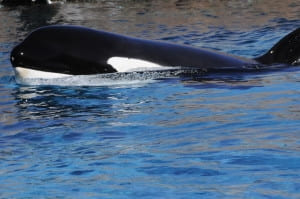A moment of rare celebration has occurred in the marine animal world. Seaworld announced on March 17 they are officially retiring the captive orca breeding program and theatrical shows involving killer whales.
Seaworld currently has 29 orcas in captivity, with six killer whales on loan. The remaining orcas will stay under the care of Seaworld and are to be the last of their kind in the entertainment facility. Seaworld holds the most marine animals in confinement in the world, and this is welcome news for cetacean activists who have been fighting against orca captivity for years.
The decision to stop theatrical shows involving orcas and end the captive breeding program is arguably the result of social pressures from the 2013 film, Blackfish. This documentary investigated the inhumane conditions of the orcas at Seaworld and the death of orca trainer by killer whale, Tilikum in 2010.
Though the end of the captive whale program is positive, key concerns remain. Seaworld’s website says, “These majestic orcas will not be released in the ocean or confined to sea cages….our existing show pools and viewing areas will be redesigned into a more naturalistic setting and we will continue to present the whales at scheduled times before a guest audience”.
I wonder what they were trying to insinuate with the carefully chosen language of “sea cages”. Sea pen sanctuaries are closed off spaces in bays or coves that could serve as conservation areas for previously captive whales. In comparison to cages on land, living in the ocean in a conservation area would be a welcome option. Seaworld’s immediate dismissal on the part of sea pens and research into them for their remaining orcas is a sore point.
“[The whales] could not survive in oceans to compete for food, be exposed to unfamiliar diseases or have to deal with environmental concerns,” Seaworld says. “Instead they will live long and healthy lives under love and care of our dedicated veterinary and other trained specialists.”
Captive whales have a much lower life expectancy than whales in the ocean. According to a 2011 study by scientist, Naomi Rose, the natural life span of female whales is 80-90 years and male whales is 60-70 years. In captivity, only two female whales have passed 40 and no male whales have lived past 35.
The study also notes the most common causes of death for captive whales are pneumonia, septicemia and other infections. In recent news, Tilikum of Blackfish, is reported to be ailing with an incurable bacterial infection. The study also says, “contributing factors to infection-caused mortality in captive orcas may be immunosuppression. Pathogens or injuries that the immune systems of wild orcas would successfully combat or manage may be fatal to captive orcas, due to chronic stress, psychological depression, and even boredom.”
On March 28 2015, Ontario banned the captivity and sale of orcas, the first and only province in Canada to do so. Unfortunately, Kiska, the lone captive whale in Canada was exempt from this law similarly to Seaworld’s captive orcas because she had been purchased by Marineland beforehand.
I can personally attest to Kiska’s boredom and agitation upon seeing her at the park. I visited to try and take pictures of the state of marine life in this abomination of an entertainment attraction when I was covering a protest for Marineland Animal Defense (M.A.D) for an animal rights publication.
I watched Kiska swim on the outer reaches of her tank, continually charging around and around her cage without pause. The orca displayed signs of telltale boredom often seen in confined animals, and upon asking the caretakers of the facility why she was alone, they replied, “because she wants to be”. The lack of evidence they were able to provide me according to that assertion was astounding to say the least.
The physical and psychological health concerns that pertain to confined orcas forces me to question whether ending the captive breeding program at Seaworld is enough. The exploration of sea pens needs to be considered as a solution for captive killer whales around the world, not to mention other marine life in captivity.
Seaworld’s announcement is only a partial victory for the confined killer whales. They will still remain in concrete tanks and will still participate in shows for the public. It forces me to ask: is this really a victory for the whales still currently in captivity worldwide?
It appears that future whales have been saved from the same life in imprisonment as Kiska and Tillikum. But, will the currently captive whales ever be able to swim in the ocean themselves, or will they instead suffer their fate in a concrete tank alone and forgotten?



